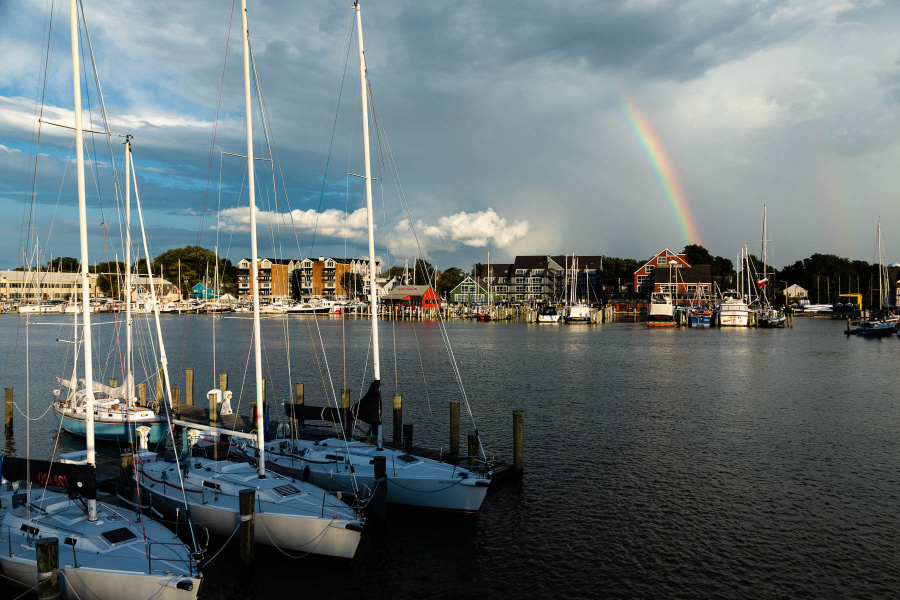Tropical Storm Isaias reminds us what’s at stake

This summer, the Chesapeake Bay region watched with caution as Hurricane Isaias headed its way. Although Isaias thankfully downgraded to a tropical storm, the weather system caused tornados, wind damage, high water, flooding and fish kills throughout the watershed. Ultimately, these harmful impacts were localized, and our estuary was left relatively intact.
While the Chesapeake Bay avoided devastation, protecting its ecosystem and the people who live within it remains a priority. As the land beneath the Bay continues to sink, climate change is leading to rising sea levels and stronger storm systems. Our low-lying watershed is increasingly vulnerable to stormwater surges and flooding, which makes strengthening the region’s resilience to climate change more important than ever.
Climate resiliency is one of the ten goals of the Chesapeake Bay Program. The partnership’s Climate Resiliency Workgroup monitors and assess’ changing climate conditions through a suite of indicators including air temperature, stream temperature, annual precipitation, upstream flooding and sea level rise. The Workgroup also seeks to increase resiliency through best management practices such as restoring wetlands or planting vegetative buffers in areas that experience coastal floods.
Building a climate resilient watershed is important for the social, physical and economic wellbeing of us all. Data from the First Street Foundation shows that flood risks are increasing in all six states within the Chesapeake watershed, as well as Washington, D.C. The associated risks of climate change are widespread, but lower-income communities are often more vulnerable because they are located in at-risk areas and lack the necessary funding to mitigate damage.
This predicted hurricane season could expose existing coastal resilience disparities among communities. Citing current oceanic and atmospheric conditions, forecasters with the National Oceanic and Atmospheric Administration’s (NOAA)’s Climate Prediction Center, a Bay Program partner, predict that the 2020 Atlantic hurricane season will have the potential to set new records for the frequency, duration and strength of storms.
“This year, we expect more, stronger and longer-lived storms than average, and our predicted ACE range extends well above NOAA’s threshold for an extremely active season,” said Gerry Bell, Ph.D., lead seasonal hurricane forecaster at NOAA’s Climate Prediction Center.
As restoration efforts help us build healthier communities and environments, it is important that individuals keep an eye on hurricane forecasts, create preparedness plans and listen to the advice from government officials in the event of a disaster.
Additionally, individuals and families are encouraged to keep COVID-19 in mind when preparing for evacuations. To learn more, visit https://www.ready.gov/hurricanes.

Comments
YAES it was big
Thank you!
Your comment has been received. Before it can be published, the comment will be reviewed by our team to ensure it adheres with our rules of engagement.
Back to recent stories